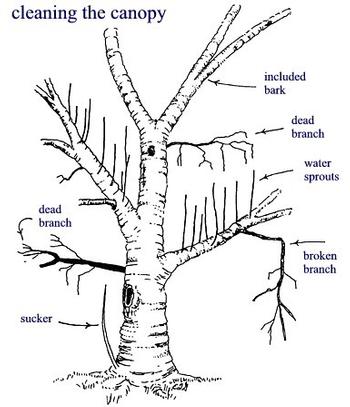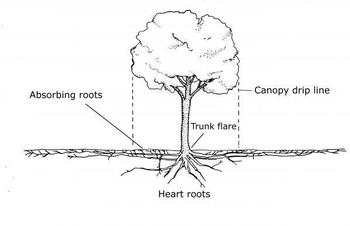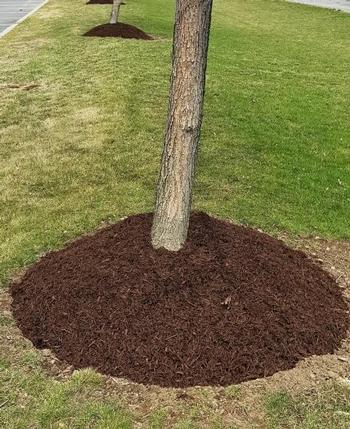What to Prune in Autumn
-
Should you prune trees and shrubs in the fall? Isn’t it necessary to wait until December or later? No. Pruning is possible in autumn, but there are important guidelines and considerations. Here's what can and cannot be pruned at this time of year.
Timing is Everything
For pruning purposes, autumn is the period from September 1 to November 30, before most deciduous plants enter dormancy.
Heads up: do NOT prune deciduous or water-stressed trees or plants
In the fall, many deciduous plants drop their leaves and store sugar in their roots ahead of the winter-dormant season. A tree or shrub should not be pruned while it is undergoing this process (e.g., fruit trees). The reason is that plants expend a great deal of energy to properly seal pruning cuts. It is best not to require plants to divert resources to that sealing effort while also undergoing the complex chemical processes that lead to dormancy. Photo: Environmental Horticulture – University of Florida
Photo: Environmental Horticulture – University of FloridaSevere drought and water restrictions have resulted in water-stressed trees and shrubs in many gardens. Such plants should not be pruned. They need all their resources to devote to survival. Pruning cuts may cause a potentially fatal reallocation of resources.
Is anything left? A great deal.
Prune out the 3 Ds: dead, diseased, or damaged branches
The three Ds refer to branches that are dead, diseased, or damaged (perhaps by wind or by human or animal activity). These branches may be removed at any time of year, even on trees and shrubs that are entering dormancy. Here is the precise method for removing a branch so that the cut seals properly.
When addressing a branch that is diseased, you may not need to remove it entirely. It is often sufficient to make the cut at least 8 to 12 inches below the diseased portion at a branch junction or just above a bud. Be sure to place the diseased wood in the trash, not in your compost bin or in the green waste can.
Prune out another D: dysfunctional branches
The fourth D refers to branches that are dysfunctional. These include at least three types of branches:
- Branches that grow back into the tree or shrub towards its trunk, not its exterior (also called “crossing branches”). These not only affect the look of the plant but also crowd the center and rub against the bark of internal branches.
- Branches that create safety hazards, such as those that grow into areas where adults and children walk or play (especially branches at eye level).
- Branches that fork at sharp (narrow) angles. They are weakly attached because their bark layers touch, creating so-called “included bark” between them. As these branches increase in girth, they press against each other and split at the point of their union.
If the dysfunctional branches are no more than 1.5 inches in diameter and they are a small portion of the plant (less than 10 percent), they can be removed in autumn. Otherwise, their removal should be postponed until the dormant season.
Remove water sprouts and suckers
Water sprouts are branches that grow vertically or nearly vertically from lateral branches. With rare exception, they should be removed, because they sap the strength of the plant and they are weakly attached to their host branches, making them generally poor choices for main (or scaffold) branches in future years.
Suckers are branches that typically grow directly from the roots themselves. If they are small (thinner than a pencil), they may be torn from the roots by hand to remove the bud structure from which they emerge. If they are larger, they may be pruned as close to their origin as possible. On grafted plants (eg., fruit trees) suckers may grow on the trunk above the soil level but below the point of the graft. These also should be removed.
Prune some (but not all) native plants Photo: University of North Carolina
Photo: University of North CarolinaWith exceptions noted below, the best time to prune many California native plants is from the last week of August through October, which includes most of the autumn months. So, if your garden includes natives, there is pruning work to do. But be careful. Many natives set their flowering buds before or during this period and bloom in the late winter or spring. Therefore, avoid extensive tip-pruning of these plants, or the result will be a beautiful green plant without blooms! Some professional pruners wait until after the bloom to prune such natives, but it is not necessary to do so if the goal is to shape the plant and not to extensively remove budding shoots. After light thinning and shaping, plenty of wood will remain for a beautiful flower show.
Prune native milkweed (and remove non-native milkweed)
Growing native milkweed (Asclepias fascicularis or Ascelpias speciosa) is critical to protect our precious monarch butterflies (Danaus plexippus). Native milkweed turns yellow in fall and should be pruned back to a few inches tall in November. It will probably disappear altogether in winter – which is exactly what you want it to do – because this coincides with the monarch's natural migration pattern. Note: it is best to NOT grow milkweed If you live within five miles of the coast, as research indicates that this region is not within the normal migration path. Learn more about habitat gardening.
Unfortunately, the non-native milkweed (Asclepias curassavica) not only blooms through winter, it is also a common host for a protozoan parasite (Ophryocystis elektroscirrha) that infects monarchs. This disrupts the monarch lifecycle and their migration. Bottom line? Do NOT grow tropical, non-native milkweed.
Avoid pruning these natives
Several types of natives are susceptible to diseases that are more active and damaging during wet weather. Such natives should be pruned only in dry months, or when the possibility of rain is at least two months away. These include:
- California lilac (Ceanothus spp.): Ceanothus are susceptible to the Cytospora canker that affects apricots. Ceanothus also do not respond well to pruning in three additional respects. First, they do not back bud -- that is, they have few latent buds on their trunks that grow to fill gaps created by pruning. Heavy pruning will therefore produce permanent, unsightly “holes.” Second, their trunks are susceptible to sunburn if the pruning allows sunlight to penetrate the center of the plant. Third, they seal pruning cuts poorly. Therefore, it is best not to make any cuts larger than approximately one inch in diameter.
- Manzanita (Arctostaphylos spp.): Manzanitas are susceptible to the Botryosphaeria Manzanitas are best pruned with limited, well-chosen thinning cuts. If you shear your manzanita with mechanical trimmers, it is best to refrain (or ask your gardener to refrain) from such trimming during the winter months.
- Oaks (Quercus ): Some oaks – notably, the coast live oak, canyon live oak, California black oak, and Shreve’s oak – are susceptible to sudden oak death caused by a fungus-like organism called Phytophthora ramorum. Equally susceptible are tanoaks (Notholithocarpus densiflorus).
Prune salvia if you live in an area with little frostIn general, salvia may be pruned in the late fall or in the spring. The decision depends upon whether a gardener’s climate includes many nights of freezing temperatures. If so, then it is best to prune in the spring, so that the previous year’s growth can protect the emerging new growth. If frost damage is not an issue, then the best time for an annual pruning is in the late fall. For precise tips on how to prune the three primary forms of salvia grown in Marin gardens, please click on woody, soft-stemmed/deciduous, or rosette-forming salvia.
Expose the root crown Example of volcano mulching – don't do this! Photo: David Russell, Cornell Cooperative Extension
Example of volcano mulching – don't do this! Photo: David Russell, Cornell Cooperative ExtensionThe root crown is the top of the root system that emerges from the soil and creates the flare at the base of the trunk. Never allow the trunk flare to become buried in soil, leaf debris, or compost – and never resort to “volcano mulching,” in which mulch is piled up against the trunk. A buried trunk flare creates the potential for a moist environment at the top (crown) of the root system that can become a breeding ground for many diseases. While this task should be performed every time a plant is pruned, not in autumn alone, it is especially prudent at this time of year because falling leaves can bury the crown just before rains (hopefully) begin.
Get ready for dormant-season pruning
While pruning in autumn, it's a good time to begin to assess the more aggressive structural pruning that becomes possible during the winter-dormant season for most plants. Resist making the big cuts until then.
Conclusion
Pruning is possible in all 12 months of the year, including autumn. Whatever the season, the two basic pruning questions remain the same: (1) what plants can be pruned in a particular month? and (2) to what extent? Following the guidelines above, your autumn pruning can greatly improve the look and health of your garden.



